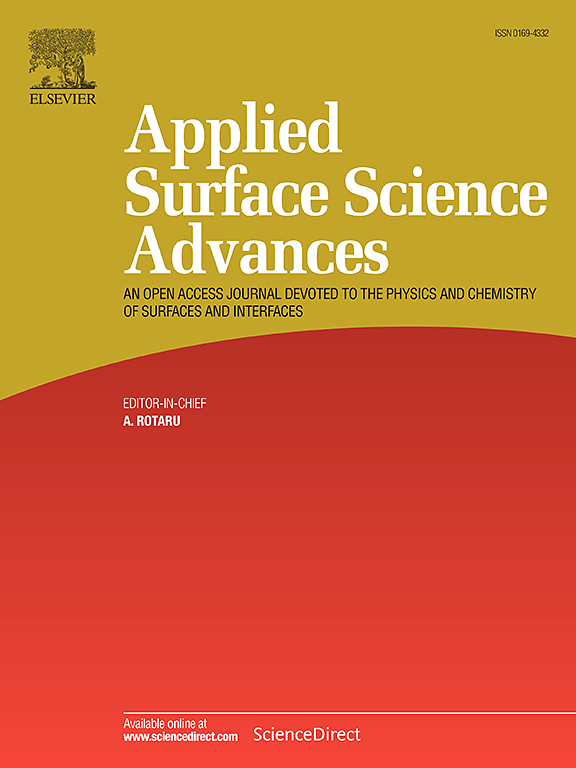Transfer of photolithographic patterns by excimer laser ablation of polymers
IF 7.5
Q1 CHEMISTRY, PHYSICAL
引用次数: 0
Abstract
Pattern transfer of lithographically produced patterns is a key technology in microelectronics and other micro- and nanotechnologies. This approach has been perfected continuously to meet the requirements for size and quality, but vacuum processes are required for pattern transfer into microelectronic materials. Here an atmospheric pressure approach of pattern transfer by laser ablation is proposed and demonstrated. Similar plasma-based pattern transfer laser beams provide a directed energy impact to the exposed material, but the resulting material reactions are different as distinct primary processes govern the material removal mechanism by ablation. The laser ablation-based pattern transfer mechanism comprises (i) optical effects such as laser photon absorption and scattering processes, (ii) thermal processes such as material heating and melting, and (iii) laser ablation processes of the masking and the substrate materials. These characteristics cause topographical effects of laser-based pattern transfer (LiPT) process that results in a specific sidewall angle of the transferred pattern due to cone formation effects, trench formation related to diffraction and reflection at the patterns and surrounding wavy pattern due to laser beam diffraction. The ablation rate ratio determines the selectivity for laser-based pattern transfer and therewith the limit in depth. The pattern transfer can be achieved locally with varying parameters including different inclination angles. The results pave the way to a new approach for sustainable economic fabrication processes that do not need vacuum and reactive gases.
准分子激光烧蚀聚合物的光刻图案转移
光刻生产图案的图案转移是微电子和其他微纳米技术的关键技术。这种方法已经不断完善,以满足尺寸和质量的要求,但需要真空工艺的图案转移到微电子材料。本文提出并论证了一种大气压力激光烧蚀模式转移方法。类似的基于等离子体的模式转移激光束为暴露的材料提供了定向能量冲击,但由于不同的主要过程控制了烧蚀材料的去除机制,因此所产生的材料反应是不同的。基于激光烧蚀的图案转移机制包括(i)光学效应,如激光光子吸收和散射过程,(ii)热过程,如材料加热和熔化,以及(iii)掩模和衬底材料的激光烧蚀过程。这些特性导致了基于激光的图案转移(LiPT)过程的地形效应,由于锥形形成效应导致转移图案的特定侧壁角,与图案衍射和反射有关的沟槽形成以及由于激光束衍射导致的周围波浪图案。烧蚀速率比决定了基于激光的图案转移的选择性,从而决定了深度的限制。通过不同的倾角等参数,可以局部实现图案传递。该结果为不需要真空和反应气体的可持续经济制造工艺的新方法铺平了道路。
本文章由计算机程序翻译,如有差异,请以英文原文为准。
求助全文
约1分钟内获得全文
求助全文

 求助内容:
求助内容: 应助结果提醒方式:
应助结果提醒方式:


